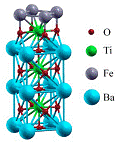Department of Physics and Astronomy: Publications and Other Research

Evgeny Tsymbal Publications
ORCID IDs
Tsymbal http://orcid.org/0000-0002-6728-5480
Document Type
Article
Date of this Version
2021
Citation
Science Advances (2021) 7: eabf1033
doi: 10.1126/sciadv.abf1033
Supplemental materials are available at http://advances.sciencemag.org/content/suppl/2021/03/22/7.13.eabf1033.DC1
Article tools are available at http://advances.sciencemag.org/content/7/13/eabf1033
Abstract
Although the phenomenon of tunneling has been known since the advent of quantum mechanics, it continues to enrich our understanding of many fields of science. Commonly, this effect is described in terms of electrons traversing the potential barrier that exceeds their kinetic energy due to the wave nature of electrons. This picture of electron tunneling fails, however, for tunnel junctions, where the Fermi energy lies sufficiently close to the insulator valence band, in which case, hole tunneling dominates. We demonstrate the deterministic control of electron and hole tunneling in interface-engineered Pt/BaTiO3/La0.7Sr0.3MnO3 ferroelectric tunnel junctions by reversal of tunneling electroresistance. Our electrical measurements, electron microscopy and spectroscopy characterization, and theoretical modeling unambiguously point out to electron or hole tunneling regimes depending on interface termination. The interface control of the tunneling regime offers designed functionalities of electronic devices.


Comments
Copyright 2021, the authors. Open access
License: CC BY 4.0 International